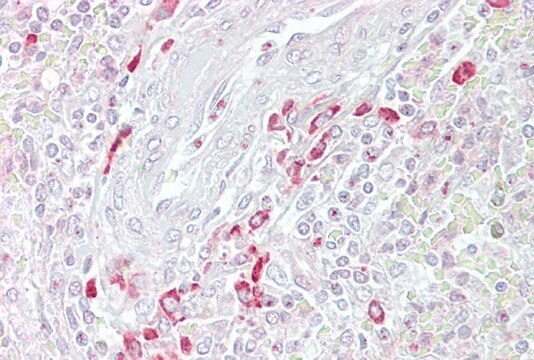GF68632465
Chromium
rod, 50mm, diameter 5.0mm, 99.7+%
Synonym(s):
Chromium, CR007920
Sign Into View Organizational & Contract Pricing
All Photos(2)
About This Item
Empirical Formula (Hill Notation):
Cr
CAS Number:
Molecular Weight:
52.00
MDL number:
UNSPSC Code:
12141709
PubChem Substance ID:
NACRES:
NA.23
Recommended Products
Assay
≥99.7%
form
rod
manufacturer/tradename
Goodfellow 686-324-65
resistivity
12.7 μΩ-cm, 20°C
L × diam.
50 mm × 5.0 mm
bp
2672 °C (lit.)
mp
1857 °C (lit.)
density
7.14 g/mL at 25 °C (lit.)
SMILES string
[Cr]
InChI
1S/Cr
InChI key
VYZAMTAEIAYCRO-UHFFFAOYSA-N
Looking for similar products? Visit Product Comparison Guide
General description
For updated SDS information please visit www.goodfellow.com.
Legal Information
Product of Goodfellow
Certificates of Analysis (COA)
Search for Certificates of Analysis (COA) by entering the products Lot/Batch Number. Lot and Batch Numbers can be found on a product’s label following the words ‘Lot’ or ‘Batch’.
Already Own This Product?
Find documentation for the products that you have recently purchased in the Document Library.
Yinan Hua et al.
The Journal of nutritional biochemistry, 23(4), 313-319 (2012-03-20)
Type 2 diabetes is often associated with obesity, dyslipidemia and cardiovascular anomalies and is a major health problem approaching global epidemic proportions. Insulin resistance, a prediabetic condition, precedes the onset of frank type 2 diabetes and offers potential avenues for
Yana Chervona et al.
Metallomics : integrated biometal science, 4(7), 619-627 (2012-04-05)
Carcinogenic metals, such as nickel, arsenic, and chromium, are widespread environmental and occupational pollutants. Chronic exposure to these metals has been connected with increased risks of numerous cancers and as well as non-carcinogenic health outcomes, including cardiovascular disease, neurologic deficits
Chad M Thompson et al.
Critical reviews in toxicology, 43(3), 244-274 (2013-03-01)
Abstract Chronic exposure to high concentrations of hexavalent chromium (Cr(VI)) in drinking water causes intestinal adenomas and carcinomas in mice, but not in rats. Cr(VI) causes damage to intestinal villi and crypt hyperplasia in mice after only one week of
A Peña-Fernández et al.
Environment international, 72, 176-185 (2014-05-06)
Rapid development, industrialisation, and urbanisation have resulted in serious contamination of soil by metals and metalloids from anthropogenic sources in many areas of the world, either directly or indirectly. Exponential urban and economic development has resulted in human populations settling
Bo Xia et al.
Toxicology letters, 228(3), 241-247 (2014-05-27)
Chromium is a potent human mutagen and carcinogen. The capability of chromium to cause cancers has been known for more than a century, and numerous epidemiological studies have been performed to determine its carcinogenicity. In the post-genome era, cancer has
Our team of scientists has experience in all areas of research including Life Science, Material Science, Chemical Synthesis, Chromatography, Analytical and many others.
Contact Technical Service






